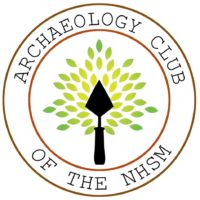The Union Mills Homestead is a historic landmark located seven miles north of Westminster, Maryland. The homestead of Maryland’s Shriver family for six generations, Union Mills was built in 1797 as an “American Dream” business enterprise by two brothers who combined their resources and respective skills in a venture involving the construction of two mills: a grist mill and a saw mill. The union of the two mills inspired the name, “Union Mills.” In addition to the mills, the business included a tannery and a variety of supporting trades.
While the Union Mills Homestead has a variety of links to natural history, the role played by pre-Columbian forests in early industrial development is the focus of this talk.
About the Speaker: Samuel M. Riley, a local attorney, is President of the Board o Governors of the Union Mills Homestead, the nonprofit that operates the historic Union Mills Homestead.
This meeting of the NHSM Archaeology Club will take place on Zoom. To receive the Zoom link and passcode via email, register for the program. Please contact the club coordinator (mfalk@marylandnature.org) with any questions.
Natural History Society of Maryland’s Archaeology Club promotes the value of archaeology in Baltimore City, Baltimore County, and surrounding areas. The goal of the Archaeology Club is to educate citizenry in the ethics, methods, and artifact preservation methods of archaeology and how archaeology can be used to document, discover, and promote local history. The Archaeology Club is inclusive to all persons who have an interest in archaeology.
If you are an archaeology enthusiast, please consider joining us. You must be a member of NHSM to join any of its clubs. Follow this link to learn more: https://www.marylandnature.org/club-membership/
The Natural History Society of Maryland is a volunteer-led non-profit organization, so the fee you pay will go directly to support the programs, the nature collections, and the building that make this kind of nature education possible.


